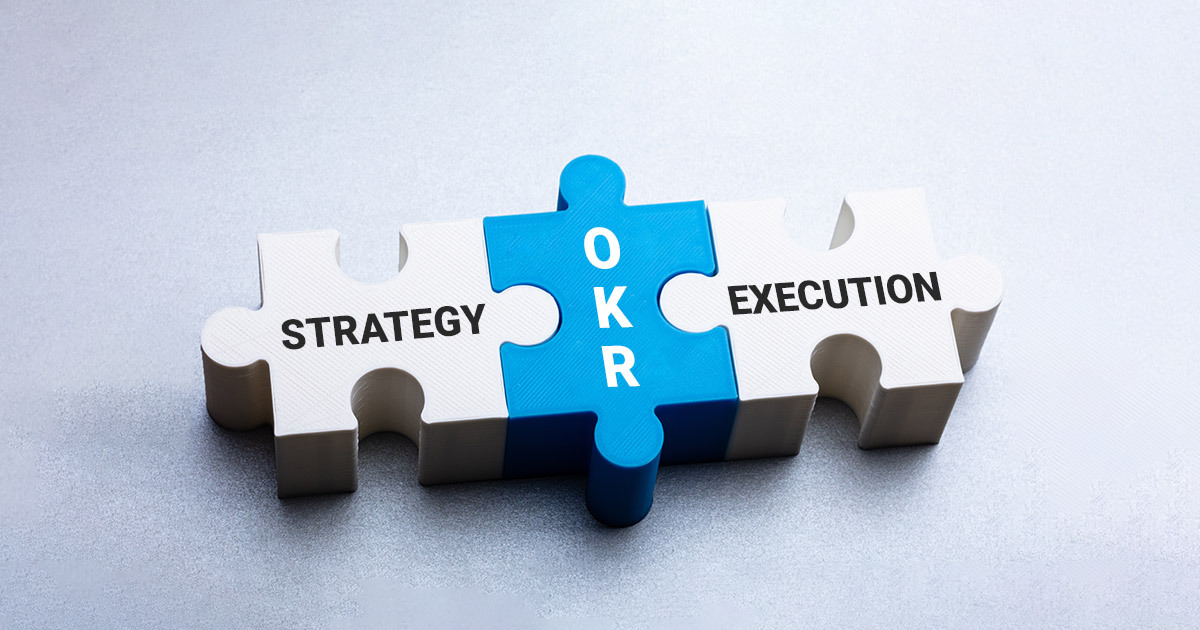December 29, 2020
Bridge the Gap between Strategy and Execution with OKR Framework

The most important skill of a learning leader is the ability to align the organizational workforce with the right business strategy and vision. Objectives and Key Results (OKR) is an ideal goal-setting framework that aids organizations to execute the right strategy and improve business outcomes. Organizations implement the OKR framework so that everyone- from the leaders to the managers and team members, align to the common objectives, focus on their priorities, and drive measurable results.
Adopting OKRs is one of the effective ways of creating a shared set of goals, keeping the right focus, and aligning everyone in the right direction. The fact that the OKR framework helps to set effective goals and enhance performance enables organizations to attain their long-term goals. It also helps to unify everyone across the organization to clearly define the objectives and meet the targets in a defined period. Those business targets are eventually associated with the company’s vision and values on a broader picture. When each individual contributes towards achieving the organizational goals, the gap between strategy and execution narrows. Key steps that enable organizations to execute the right strategy using OKRs include-
- Set the Priorities
The first and the foremost step is to clear all the priorities on a quarter or annual basis. Based on the company’s vision and its long-term goals, business leaders set the common organizational objectives for teams and individuals. For instance, if the company’s priority is customer orientation, then the sales team’s one of the priorities should be to increase sales and improve customer retention. Missing this step can bring a major gap between the strategy and its execution at the end of quarter or year. - Define Objectives & Results
Once the priorities are well communicated, the next step is to funnel down the objectives to teams and individuals. Then, each member in the team needs to discuss with their managers about their quarterly goals and how they will contribute. When the objectives are set, the next step is to analyze the key results that you want to achieve. Each team sets different key results against the targeted objective that will ultimately help to drive business outcomes and ROIs. - Planning To-do Initiatives
Once the objectives are set, priorities are clear, and key results are measured, the teams plan on the initiatives that contribute to business success. For this, managers conduct weekly or monthly reviews to assess individual performance and plan immediate activities to boost workforce performance and business productivity while progressing towards achieving the outcomes. At the end of every quarter, every team analyze the outcomes against the intended goals and reflect their learning journey.
The OKR framework enables organizations to successfully adopt, track, and implement objectives and key results. With ever-evolving market conditions, companies are using OKRs to boost employee engagement, drive collaboration, enhance performance impact, and ultimately succeed and grow. People may confuse OKRs as a checklist of tasks that needs to be completed. But the significance of OKRs lies in creating shared goals, focusing on the priorities, and gauging performance impact through key outcomes. The OKR framework paves the way to drive team collaboration and effective decision making, maintains unity, and spurs innovation while moving towards a shared set of goals. Undoubtedly, businesses implement OKRs to ensure that everyone within the organization is well aware where the company is progressing and contributes towards its success journey.
Unlock:OKR is a powerful goal setting framework that aligns everyone towards common goals, focus on all priorities, and attain measurable outcomes. To know how Unlock:OKR can bring the best possible results through Focus, Clarity, Alignment, and Accountability, join our unique First Class Program.
